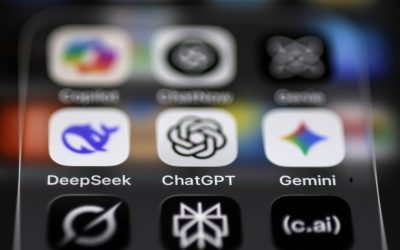OpenAI Svela Gpt-5: Il Nuovo Modello di Intelligenza Artificiale
After months of anticipation, OpenAI has finally unveiled Gpt-5, the latest model of artificial intelligence that powers the popular chatbot ChatGpt. This update is significant not only from a technical perspective but also because it is expected to be the last major update before the release of AGI (Artificial General Intelligence), which will be capable of reasoning like humans in complex tasks. Gpt-5 is available immediately, even for free users.
Miglioramenti e Caratteristiche
According to OpenAI’s official statement, Gpt-5 represents a new benchmark in terms of response accuracy and reduced incidence of “allucinazioni” (errors that artificial intelligence systems can encounter). Furthermore, “Gpt-5 is the best model ever developed by OpenAI for health-related questions,” the statement reads. “It can help understand results, formulate appropriate questions for specialists, and evaluate options when making decisions. Gpt-5 also offers more precise and reliable responses, adapting to the user’s context, knowledge level, and geographical location, providing safer and more useful responses in a wide range of scenarios.”
Versioni e Personalizzazione
The Gpt-5 model is unique but divided into three commercial offerings. The standard version, Gpt-5, is optimized for reasoning and tasks that require multiple logical steps. Gpt-5-mini is a lighter and more cost-effective version, designed to consume fewer resources. Gpt-5-nano, on the other hand, is designed for speed and, according to OpenAI, is the choice for applications that require low latency, i.e., minimal time between a request and the AI’s response.
OpenAI is also focusing on personalization, offering four personalities to choose from: Cynic, Robot, Listener, and Nerd, which respond in a concise and professional, caring, encouraging, or slightly sarcastic manner. These options are optional and can be adjusted at any time in ChatGpt settings. Additionally, integrations with Gmail, Google Calendar, and Google Contacts are available, allowing ChatGpt to read data in these apps and produce contextual responses based on the information.
Storia e Sviluppo
OpenAI developed its first model, Gpt-1, in June 2018. At the time, it was considered revolutionary, with its 110 million parameters and ability to generate coherent and meaningful text. Just a year later, in February 2019, Gpt-2 was released, which was so powerful in generating text that OpenAI initially decided not to release it due to fears of misuse.
The real turning point came with Gpt-3, released in June 2020, which could translate languages, generate code, and perform a wide range of tasks. This was the basis for ChatGpt, which was published almost three years ago. In March 2023, Gpt-4 was introduced, showing significant improvements in depth of understanding, reasoning, and production of more accurate and nuanced responses. Before Gpt-5, there was Gpt-4o, released in May 2024, which integrated multiple modalities (text, images, and audio) into a single neural network.
FP



